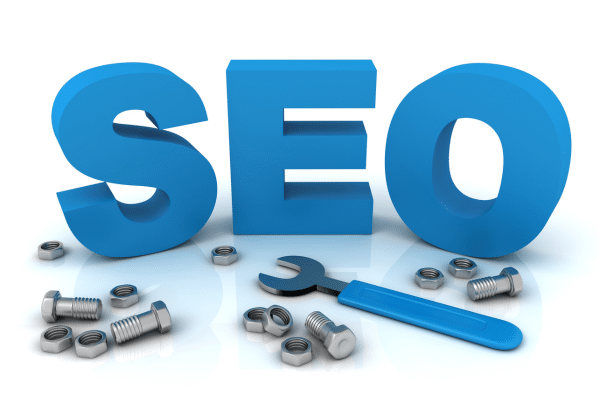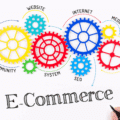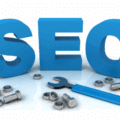We present a deeply detailed, fully refined strategy tailored for SaaS companies and agencies offering SEO services aiming to dominate search rankings. This comprehensive guide is structured to drive sustained organic growth, attract qualified leads, and convert them through the full buyer journey.
Introduction: The Strategic Imperative of SaaS SEO
In the competitive world of software-as-a-service, mastering SaaS SEO is essential. It’s not just about ranking; it’s about aligning search intent with long sales cycles, educating a complex audience, and optimizing every stage of acquisition, onboarding, retention, upsell, and referrals. Brands investing in robust SEO services for their SaaS offering can reduce customer acquisition cost, improve lifetime value, and build authority in their niche.
1. Foundational Audit & Discovery: Laying the SEO Services Blueprint
1.1 Discovery Workshop & Positioning
- Define product features, buyer personas, industry verticals, competitive landscape, unique value, and use cases.
- Map product to categories (e.g. CRM SaaS, analytics, automation).
- Understand buyers: technical users, procurement, executives, end users.
1.2 Technical Health Audit
- Crawl the site to identify crawl issues, broken links, inconsistent redirects, canonical issues, indexation blocks, and orphan pages.
- Ensure HTTPS, mobile friendliness, site speed, structured data markup, clean site architecture, sitemap & robots file.
- Fix redirect chains, canonical mismatches, and unreachable pages.
1.3 Baseline Metrics & KPIs
Define key performance metrics that SEO services teams will monitor, such as:
- Organic traffic, organic conversions (e.g. trial signups, demos)
- Keyword ranking positions for target SaaS keywords
- Click-through rate (CTR) from organic results
- Bounce rate and engagement depth
- Funnel conversion metrics from awareness → demo → paid plan
2. Keyword Research & Intent Mapping for SaaS
2.1 Broad to Deep Keyword Stratification
- Start with broad seed keywords related to your software domain (e.g. “project management SaaS”, “automation software”).
- Use keyword tools to expand into variations: feature-based, industry-based, problem-based (pain points), use-case, competitor alternatives, long tail queries.
- Prioritize long-tail queries with high buyer intent (e.g. “CRM SaaS for small e-commerce teams”, or “data analytics SaaS with API integration”).
2.2 Buyer Journey & Intent Alignment
Break down search intent across funnel stages:
- Awareness: educational queries (e.g. “what is SaaS CRM”, “benefits of automation software”)
- Consideration: feature / comparison / alternatives (e.g. “CRM SaaS vs on-prem software”, “best SaaS analytics for marketing teams”)
- Decision: pricing, free trials, direct product queries (e.g. “pricing CRM SaaS plan”, “free trial SaaS automation”)
2.3 Keyword Prioritization
- Evaluate search volume, competition, and relevance to buyer personas.
- Score keywords by impact: high intent + low or medium competition = highest priority.
- Group keywords into clusters around core topics (pillars) plus supporting cluster content to reinforce topical authority.
3. Content Strategy: Pillars, Clusters, and Conversion Funnels
3.1 Pillar Pages & Cluster Content
- Create cornerstone pillar content targeting broad high-value keywords (e.g. “Complete guide to SaaS CRM analytics”).
- Build cluster articles around narrower long-tail and feature/use-case keywords, linking back to the the pillar.
- Ensure internal linking connects clusters to pillars to signal topical relevance and depth for search engines.
3.2 Content for SaaS Buyer Personas
- Produce content tailored to each stakeholder: end users (how-to guides), technical evaluators (APIs, integrations), decision makers (ROI, case studies).
- Provide educational content: onboarding guides, tutorials, FAQs, onboarding documentation, feature release updates to support retention.
3.3 Content Optimization & SEO Services Best Practices
- Optimize meta titles and meta descriptions with keywords naturally inserted (keyword + benefit).
- Use headings and subheadings (H1, H2, H3) with natural variations of “SaaS SEO” and related long tails.
- Optimize images with alt text and descriptive filenames (e.g. “saas-seo-checklist.png”).
- Use structured data (e.g. FAQ markup, product markup) to enhance SERP presence.
4. Technical SEO for SaaS Platforms
4.1 Site Architecture & Crawlability
- Use a logical hierarchy: home → product → features → resources → support.
- Build a comprehensive XML sitemap and ensure it’s submitted to search consoles.
- Use canonical tags for duplicate or variant pages (e.g. region or language versions).
4.2 Performance & Mobile Optimization
- Compress images, minimize CSS/JS, use lazy loading to reduce load times.
- Ensure the platform is fully responsive and mobile-friendly since many decision makers may browse from mobile devices.
- Monitor Core Web Vitals (LCP, FID, CLS) to meet performance thresholds.
4.3 Platform Considerations
- For SaaS apps with dashboards or user portals, ensure that the marketing site is crawlable (separate from app backend).
- Use static marketing pages rather than client-side JS heavy pages for content that needs indexing.
5. Link Building & Authority Building for SaaS Brands
5.1 Authoritative Backlinks
- Acquire links from industry publications, software directories, SaaS review platforms, thought leadership blogs.
- Publish guest posts and case studies on niche blogs relevant to your industry vertical or target persona.
5.2 Internal Linking & Contextual Authority
- Within resource content and blog posts, link contextually to product landing pages or feature pages to pass link equity.
- Use anchor text variation to avoid over-optimization while reinforcing relevant keywords (e.g. “SaaS SEO strategy”, “software analytics SEO service”).
5.3 Link Outreach as an SEO Service
- A systematic outreach to relevant domains with high domain authority helps boost brand credibility and increases organic ranking potential.
- Use broken link building or resource page link opportunities to secure links to helpful content.
6. Conversion Optimization & Funnel Integration
6.1 SEO → Conversion Flow
- Design landing pages optimized for targeted keywords that also guide visitors to free trials or demos.
- Use persuasive copy aligned with search intent (i.e. what searcher expects when they land).
- Integrate clear CTAs and conversion paths: trial signups, demo booking, content download.
6.2 Retention & Upsell through SEO Content
- Create content for existing users: release notes, advanced how-to guides, best practices, integration tutorials.
- Use content to drive upsell (e.g. feature comparisons, premium plan benefits).
6.3 Analytics & Continuous Improvement
- Monitor organic funnel drop-offs: visitor → trial → paid → churn.
- Use A/B testing on landing pages that receive organic traffic to improve conversion rate.
7. Measurement, Reporting & Iteration
7.1 KPI Dashboard
- Organic sessions, new leads from organic, keyword position metrics, conversion rates from organic traffic.
- Monitor performance by funnel stage, by persona, by keyword cluster.
7.2 Iterative Optimization
- Reoptimize existing content: update with new features, add new keywords, refresh data or examples.
- Expand clusters based on new keyword opportunities and content gaps.
7.3 Competitive Benchmarking
- Regularly analyze competitor SaaS brands and their SEO strategies.
- Identify content gaps and backlink opportunities to outrank competitors in target keywords.
8. Checklist for Delivering SEO Services to SaaS Clients
|
Step |
Action |
|
Discovery |
Run audits, workshops, persona mapping |
|
Keyword Research |
Deep long-tail + buyer journey mapping |
|
Content Planning |
Pillar + cluster + internal linking |
|
Technical SEO |
Speed, mobile, crawlability, architecture |
|
Link Building |
Outreach + authoritative links + content links |
|
Funnel Integration |
Landing pages, CTAs, trial/demos |
|
Reporting |
KPI tracking + optimization iteration |
Conclusion: Sustainable Organic Growth for SaaS Brands
By treating SaaS SEO as a holistic discipline—combining technical excellence, strategic content, buyer journey alignment, and high-quality backlinks—brands can deliver long-term organic growth and meaningful conversions. Well-structured SEO services tailored for SaaS companies not only improve visibility but fuel the entire customer lifecycle from acquisition to retention.











Keine Kommentare
Kommentar verfassen Cancel